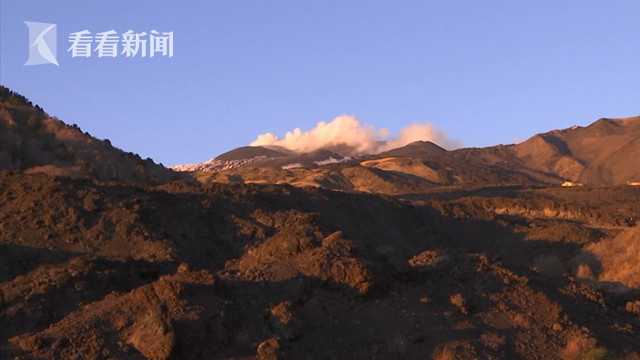camera.takePicture()崩溃我的应用程序我的、应用程序、camera、takePicture
我有一个应用程序,应该使用更多的camera.takePicture图片。在code我用的是以下内容:
I have an app that is supposed to take pictures using the camera.takePicture. The code I use is the following :
private Bitmap bitmapPicture;
//inside onCreate
btn.setOnClickListener(new OnClickListener(){
public void onClick(View v){
camera.takePicture(myShutterCallback,
myPictureCallback_RAW, myPictureCallback_JPG);
}
});
//inside the activity
ShutterCallback myShutterCallback = new ShutterCallback(){
@Override
public void onShutter() {
// TODO Auto-generated method stub
}};
PictureCallback myPictureCallback_RAW = new PictureCallback(){
@Override
public void onPictureTaken(byte[] arg0, Camera arg1) {
// TODO Auto-generated method stub
}};
PictureCallback myPictureCallback_JPG = new PictureCallback(){
@Override
public void onPictureTaken(byte[] arg0, Camera arg1) {
// TODO Auto-generated method stub
bitmapPicture = BitmapFactory.decodeByteArray(arg0, 0, arg0.length);
}};
当我点击该按钮,快门声音响起,在surfaceView弗罗泽的形象,但随后的应用程序崩溃。这究竟是为什么?当我在模拟器上运行它与模拟摄像头的工作,但在设备上的崩溃。
When i click the button the shutter sound plays, the image on the surfaceView frozes but then the app crashes . Why is this happening ? When i run it on the emulator with an emulated camera its working but on a device is crashing.
推荐答案
我终于解决了这个。下面我给一些code谁想要知道如何利用布局截图,照片从相机无意图,一surfaceView内容的截图(某种程度上),并保存屏幕截图文件夹中:
I finally solved this . Below i give some code for anyone who wants to know how to take screenshots of a layout ,pictures from the camera without intent, screenshots(sort of) of the content of a surfaceView and save the screen shot in a folder :
public class Cam_View extends Activity implements SurfaceHolder.Callback{
protected static final int CAPTURE_IMAGE_ACTIVITY_REQUEST_CODE = 0;
private SurfaceView SurView;
private SurfaceHolder camHolder;
private boolean previewRunning;
final Context context = this;
public static Camera camera = null;
private RelativeLayout CamView;
private Bitmap inputBMP=null,bmp,bmp1;
private ImageView mImage;
@SuppressWarnings("deprecation")
@Override
protected void onCreate(Bundle savedInstanceState) {
super.onCreate(savedInstanceState);
setContentView(R.layout.camera);
CamView = (RelativeLayout) findViewById(R.id.camview);//RELATIVELAYOUT OR
//ANY LAYOUT OF YOUR XML
SurView = (SurfaceView)findViewById(R.id.sview);//SURFACEVIEW FOR THE PREVIEW
//OF THE CAMERA FEED
camHolder = SurView.getHolder(); //NEEDED FOR THE PREVIEW
camHolder.addCallback(this); //NEEDED FOR THE PREVIEW
camHolder.setType(SurfaceHolder.SURFACE_TYPE_PUSH_BUFFERS);//NEEDED FOR THE PREVIEW
camera_image = (ImageView) findViewById(R.id.camera_image);//NEEDED FOR THE PREVIEW
Button btn = (Button) findViewById(R.id.button1); //THE BUTTON FOR TAKING PICTURE
btn.setOnClickListener(new OnClickListener() //THE BUTTON CODE
{
public void onClick(View v)
{
camera.takePicture(null, null, mPicture);//TAKING THE PICTURE
//THE mPicture IS CALLED
//WHICH IS THE LAST METHOD(SEE BELOW)
}
});
}
@Override
public void surfaceChanged(SurfaceHolder holder, int format, int width,//NEEDED FOR THE PREVIEW
int height) {
if(previewRunning){
camera.stopPreview();
}
Camera.Parameters camParams = camera.getParameters();
Camera.Size size = camParams.getSupportedPreviewSizes().get(0);
camParams.setPreviewSize(size.width, size.height);
camera.setParameters(camParams);
try{
camera.setPreviewDisplay(holder);
camera.startPreview();
previewRunning=true;
}catch(IOException e){
e.printStackTrace();
}
}
public void surfaceCreated(SurfaceHolder holder) { //NEEDED FOR THE PREVIEW
try{
camera=Camera.open();
}catch(Exception e){
e.printStackTrace();
Toast.makeText(getApplicationContext(),"Error",Toast.LENGTH_LONG).show();
finish();
}
}
@Override
public void surfaceDestroyed(SurfaceHolder holder) { //NEEDED FOR THE PREVIEW
camera.stopPreview();
camera.release();
camera=null;
}
public void TakeScreenshot(){ //THIS METHOD TAKES A SCREENSHOT AND SAVES IT AS .jpg
Random num = new Random();
int nu=num.nextInt(1000); //PRODUCING A RANDOM NUMBER FOR FILE NAME
CamView.setDrawingCacheEnabled(true); //CamView OR THE NAME OF YOUR LAYOUR
CamView.buildDrawingCache(true);
Bitmap bmp = Bitmap.createBitmap(CamView.getDrawingCache());
CamView.setDrawingCacheEnabled(false); // clear drawing cache
ByteArrayOutputStream bos = new ByteArrayOutputStream();
bmp.compress(CompressFormat.JPEG, 100, bos);
byte[] bitmapdata = bos.toByteArray();
ByteArrayInputStream fis = new ByteArrayInputStream(bitmapdata);
String picId=String.valueOf(nu);
String myfile="Ghost"+picId+".jpeg";
File dir_image = new File(Environment.getExternalStorageDirectory()+//<---
File.separator+"Ultimate Entity Detector"); //<---
dir_image.mkdirs(); //<---
//^IN THESE 3 LINES YOU SET THE FOLDER PATH/NAME . HERE I CHOOSE TO SAVE
//THE FILE IN THE SD CARD IN THE FOLDER "Ultimate Entity Detector"
try {
File tmpFile = new File(dir_image,myfile);
FileOutputStream fos = new FileOutputStream(tmpFile);
byte[] buf = new byte[1024];
int len;
while ((len = fis.read(buf)) > 0) {
fos.write(buf, 0, len);
}
fis.close();
fos.close();
Toast.makeText(getApplicationContext(),
"The file is saved at :SD/Ultimate Entity Detector",Toast.LENGTH_LONG).show();
bmp1 = null;
camera_image.setImageBitmap(bmp1); //RESETING THE PREVIEW
camera.startPreview(); //RESETING THE PREVIEW
} catch (FileNotFoundException e) {
e.printStackTrace();
} catch (IOException e) {
e.printStackTrace();
}
}
private PictureCallback mPicture = new PictureCallback() { //THIS METHOD AND THE METHOD BELOW
//CONVERT THE CAPTURED IMAGE IN A JPG FILE AND SAVE IT
@Override
public void onPictureTaken(byte[] data, Camera camera) {
File dir_image2 = new File(Environment.getExternalStorageDirectory()+
File.separator+"Ultimate Entity Detector");
dir_image2.mkdirs(); //AGAIN CHOOSING FOLDER FOR THE PICTURE(WHICH IS LIKE A SURFACEVIEW
//SCREENSHOT)
File tmpFile = new File(dir_image2,"TempGhost.jpg"); //MAKING A FILE IN THE PATH
//dir_image2(SEE RIGHT ABOVE) AND NAMING IT "TempGhost.jpg" OR ANYTHING ELSE
try {//SAVING
FileOutputStream fos = new FileOutputStream(tmpFile);
fos.write(data);
fos.close();
//grabImage();
} catch (FileNotFoundException e) {
Toast.makeText(getApplicationContext(),"Error",Toast.LENGTH_LONG).show();
} catch (IOException e) {
Toast.makeText(getApplicationContext(),"Error",Toast.LENGTH_LONG).show();
}
String path = (Environment.getExternalStorageDirectory()+
File.separator+"Ultimate EntityDetector"+
File.separator+"TempGhost.jpg");//<---
BitmapFactory.Options options = new BitmapFactory.Options();//<---
options.inPreferredConfig = Bitmap.Config.ARGB_8888;//<---
bmp1 = BitmapFactory.decodeFile(path, options);//<---
//THE LINES ABOVE READ THE FILE WE SAVED BEFORE AND CONVERT IT INTO A BitMap
camera_image.setImageBitmap(bmp1); //SETTING THE BitMap AS IMAGE IN AN IMAGEVIEW(SOMETHING
//LIKE A BACKGROUNG FOR THE LAYOUT)
TakeScreenshot();//CALLING THIS METHOD TO TAKE A SCREENSHOT
}
};
}
如果你想利用一个简单的截图(没有摄像头饲料需要),你可以单独使用TakeScreenshot方法。
If you want to take a simple screenshot(no camera feed is needed) the you can use the TakeScreenshot method alone.
如果你想利用一个surfaceView的截图与不可能从surfaceview直接使用mPicture做,设置图片捕捉为的backgroung,然后调用TakeScreenshot把你的截图。(如上所示)
If you want to take a screenshot of a surfaceView with is not possible to do from the surfaceview directly the use the mPicture, set the picture you capture as backgroung , and then call TakeScreenshot to take your screenshot.(as seen above)
如果你想使用相机拍摄的照片,而无需调用的其他相机应用,意图利用takePicture与mPicture和surfaceView东西从code以上。
If you want to take a picture with the camera without calling an other camera app with an intent the use the takePicture with the mPicture and the surfaceView stuff from the code above.
如果使用了previous code做原样采取的版面内容(按钮,imageviews等)的屏幕截图和设定的backgroung图像从相机。
What the previous code does if used "as is" is to take a screenshot of the layout contents(buttons,imageviews etc) and set as backgroung an image from the camera.
下面我还提供了一个基本的布局XML为previous code:
Below i also provide a basic layout xml for the previous code :
<?xml version="1.0" encoding="utf-8"?>
<RelativeLayout xmlns:android="http://schemas.android.com/apk/res/android"
android:layout_width="match_parent"
android:layout_height="match_parent"
android:id="@+id/camview">
<SurfaceView
android:id="@+id/sview"
android:layout_width="match_parent"
android:layout_height="match_parent"
android:layout_alignParentLeft="true"
android:layout_alignParentTop="true" />
<ImageView
android:id="@+id/camera_image"
android:layout_width="match_parent"
android:layout_height="match_parent"
android:contentDescription="@string/app_name" />
<Button
android:id="@+id/button1"
style="?android:attr/buttonStyleSmall"
android:layout_width="wrap_content"
android:layout_height="wrap_content"
android:layout_alignParentLeft="true"
android:layout_alignParentTop="true" />
</RelativeLayout>









